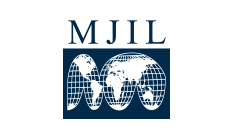Abstract
The British bank Northern Rock failed on September 14, 2007; U.S. investment bank Bear Stearns collapsed on March 17, 2008 and was subject to a government-engineered takeover by J.P. Morgan Chase; and, on the night of September 15, 2008, U.S. investment bank Lehman Brothers filed for bankruptcy and sent global financial markets into disarray the following Monday morning. These financial institutions shared several features in common prior to their downfall, but perhaps the most curious is that they were each considered fully compliant with the second generation framework for the Basel Accords on Capital Adequacy (Basel II), an international agreement requiring banks to maintain capital levels consistent with then, state-of-the-art risk metrics. Basel II, it turns out, was insufficient to ward off the insolvency of many large, multinational financial institutions. The Basel Committee on Bank Supervision was not the only international body exercising oversight of financial firms and markets prior to the global financial crisis of 2008 (2008 Crisis). One function of the International Monetary Fund (IMF) was to provide continuous “surveillance” of international markets. Among other occasions, it did so informally in September of 2008 by publishing statements of its president Olivier Blanchard, entitled “Blanchard Sees Global Economy Weathering Financial Storm.” Contrary to the IMF’s forecast, however, Lehman Brothers collapsed just two weeks later and the global economy capsized in the ensuing financial storm.
Recommended Citation
Matthew C. Turk,
Reframing International Financial Regulation After the Global Financial Crisis: Rational States and Interdependence, not Regulatory Networks and Soft Law,
36
Mich. J. Int'l L.
59
(2014).
Available at:
https://repository.law.umich.edu/mjil/vol36/iss1/2

